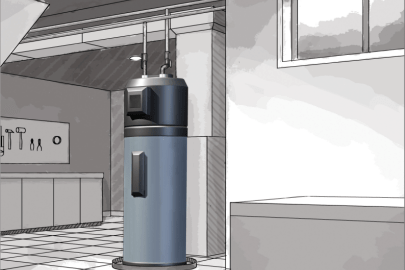Do you find yourself trying to find help on What Kind of Maintenance Do Water Heaters Need??

Warm water is necessary for everyday comfort, whether it's for a rejuvenating shower or washing meals. To guarantee your hot water system runs effectively and lasts longer, routine upkeep is essential. This short article provides useful ideas and understandings on exactly how to preserve your home's hot water system to stay clear of disruptions and expensive repair work.
Intro
Keeping your home's hot water system could appear challenging, but with a few easy actions, you can ensure it runs smoothly for many years to find. This overview covers everything from recognizing your warm water system to do it yourself upkeep ideas and understanding when to hire expert assistance.
Importance of Maintaining Your Hot Water System
Routine maintenance not just prolongs the life-span of your warm water system but additionally ensures it runs successfully. Ignoring upkeep can result in lowered effectiveness, greater power costs, and also premature failure of the system.
Indications Your Warm Water System Requirements Maintenance
Understanding when your warm water system requires interest can stop significant issues. Watch out for signs such as inconsistent water temperature, strange sounds from the heater, or rusty water.
Flushing the Water Heater
Flushing your hot water heater eliminates sediment build-up, improving effectiveness and extending its life.
Checking and Changing Anode Rods
Anode rods avoid corrosion inside the container. Evaluating and replacing them when worn out is crucial.
Facility Concerns Calling For Expert Help
Instances include major leakages, electrical troubles, or if your hot water heater is constantly underperforming.
Regular Specialist Maintenance Advantages
Professional maintenance can consist of complete assessments, tune-ups, and making sure compliance with safety and security criteria.
Checking and Adjusting Temperature Level Settings
Readjusting the temperature setups makes sure optimum efficiency and safety.
DIY Tips for Upkeep
You can do several upkeep jobs on your own to keep your warm water system in top problem.
Checking for Leaks
Routinely examine pipelines and connections for leakages, as these can result in water damages and higher expenses.
Understanding Your Warm Water System
Prior to diving into upkeep tasks, it's practical to recognize the basic components of your warm water system. Commonly, this includes the hot water heater itself, pipes, anode rods, and temperature level controls.
Regular Monthly Maintenance Tasks
Regular month-to-month checks can help capture minor problems prior to they intensify.
Checking Pressure Alleviation Valves
Testing the pressure safety valve guarantees it functions properly and protects against excessive pressure buildup.
Shielding Pipelines
Shielding warm water pipes lowers heat loss and can conserve energy.
When to Call a Professional
While do it yourself maintenance is advantageous, some problems call for professional competence.
Conclusion
Routine upkeep of your home's hot water system is necessary for performance, durability, and price savings. By adhering to these ideas and knowing when to seek expert aid, you can make sure a reliable supply of hot water without unexpected disruptions.
How to Maintain an Instant Hot Water Heater
Before tinkering with your hot water heater, make sure that it’s not powered on. You also have to turn off the main circuit breaker and shut off the main gas line to prevent accidents. Also turn off the water valves connected to your unit to prevent water from flowing into and out of the appliance. 2. When you’re done, you have to detach the purge valves’ caps. These look like the letter “T” and are situated on either side of the water valves. Doing so will release any pressure that has accumulated inside the valves while at the same time avoid hot water from shooting out and burning your skin. 3. When the purge valves’ caps are removed, you have to connect your hosing lines to the valves. Your unit should have come with three hoses but if it didn’t, you can purchase these things from any hardware or home repair shops. You can also get them from retail stores that sell water heating systems. Read the user’s manual and follow it to complete this task properly. When the hosing lines are connected, open the purge port’s valves. 4. You should never use harsh chemical cleaners or solutions when cleaning your unit. Make use of white vinegar instead. It should be undiluted and you’ll probably use about 2 gallons. 5. Now flush your water heater. This task should probably take about 40 minutes. We can’t give you specific directions for this because the procedure is carried out depending on the type, model and brand of your heater. With that being said, refer to the user’s manual. 6. When you’re done draining the unit, you have to turn off the purge port valves again. Remove the hosing lines that you earlier installed on each of the water valves. Put the valve caps (purge port) back in their respective places and be very careful so as not to damage the rubber discs that are found inside these caps. 7. Now that everything’s back in place, check your user’s manual again to find out how to reactivate your water heating system. 8. Once it is working, turn one of your hot water faucets on just to let air pass through the heater’s water supply pipes. Leave the tap on until water flows smoothly out of it. https://www.orrplumbing.com/blog/2014/september/how-to-maintain-an-instant-hot-water-heater/

I ran across that article about What Kind of Maintenance Do Water Heaters Need? while doing a lookup on the internet. Do you know about somebody else who is sincerely interested in the topic? Feel free to promote it. I cherish reading our article about Tips on Maintaining a Water Heater.
Rates